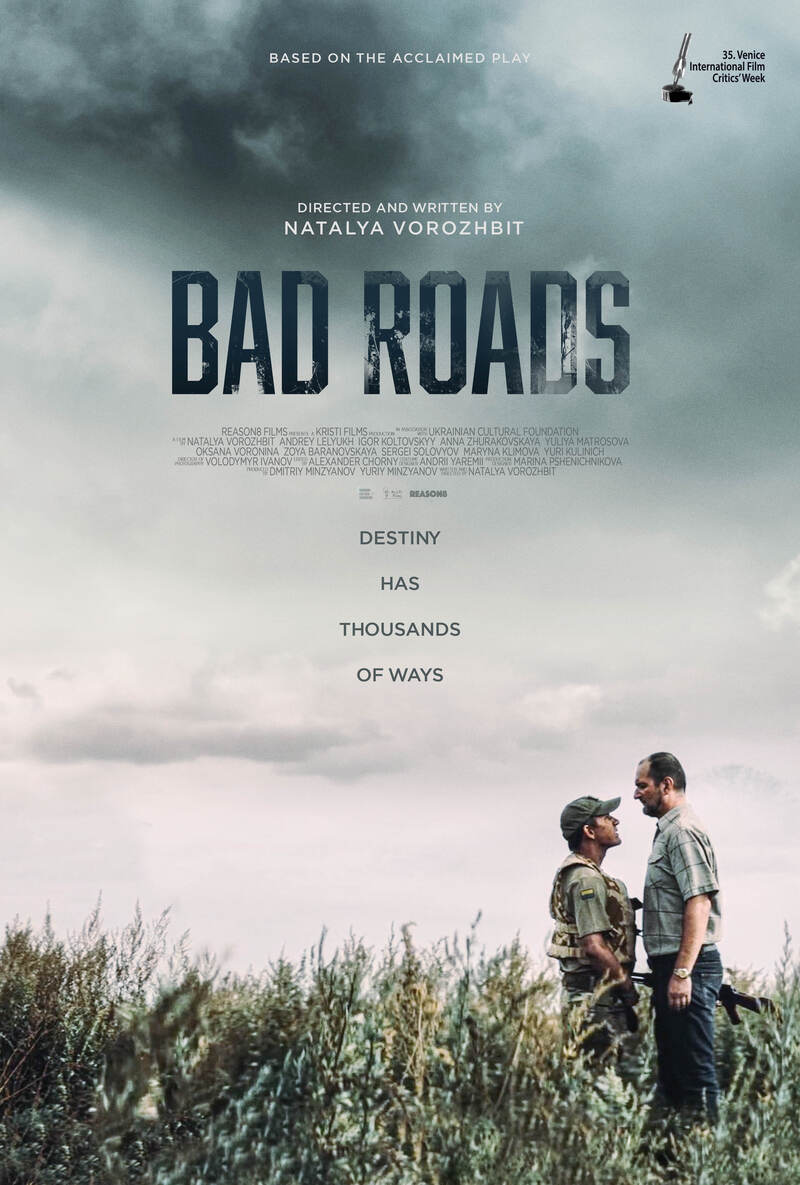
Review by
Benjamin Poole
Directed by: Natalya Vorozhbit
Starring: Igor Koltovskyy, Andrey Lelyukh, Vladimir Gurin, Anna Zhurakovskaya,
Yuliya Matrosova, Maryna Klimova, Yuri Kulinich, Zoya Baranovskaya, Oksana
Voronina, Sergei Solovyov

We open on a Donbas highway somewhere along the border of Ukraine.
Constant heat rises from the tarmac, creating a warm haze in the air
above; a shimmering inversion layer which belies the landscape. Pressure,
an entrapment of oxygen, distorts and manipulates our perspectives and
makes it hard to breathe. In Natalya Vorozhbit’s portmanteau of
four stories concerning the Ukrainian war, and the twisted behaviours of
people caught within the crushing dynamics of conflict and mistrust, we
witness the corruption of human interchange under compelled circumstances.

Pulling back from the asphalt, Bad Roads’ first tale concerns a drunken headmaster stopped at border control by
eager soldiers. As a playwright (Bad Roads was originally
performed and published as a theatrical work), Vorozhbit’s dialogue is the
draw in this first story, with our suspicions exploited by the fluid
interaction between the supposed teacher and the men with guns - is this
hapless bloke really an educator trying to go about his day? Can the AK47
found in the boot of his car actually be, as he claims, a model used to
teach children about war? The in media res exclusion manipulates the
audience - our natural instinct is to align with the underdog, but, at the
same time, this is Ukraine during war, where citizens are drawn into
violence and brutality. Trust is unafforded to Vorozhbit’s characters and
concurrently not a luxury extended to her audience, either.

The second tale involves a group of girls waiting for their soldier
boyfriends at a bus stop. The girls’ matter of fact conversations about
sex and the expected standard of women within male hegemonies is
intriguingly revealing of the everyday subjugations in Ukraine, but after
the shifting sympathies of the opening gambit, this section slows the
pace, and is probably the aspect most telling of Bad Roads’ theatrical origins. Cinema can flatten interactions which are otherwise
vivid and insistent in live performance, viz. that adage about cinematic
dialogue being overheard, while theatrical speech is directed.
Eavesdropping on these teens and their worries about virginity and honour
doesn’t quite have the urgency of Bad Roads’ other stories.

However, as part of Bad Roads’ loosely linked narrative structure, this section does function as a
prelude for the film’s third and most powerful quarter, a two hander
wherein a female journalist is captured by an opposition soldier (a
paramour of one of the previous characters?) and proceeds to be brutalised
verbally and physically in the film’s longest sequence. The cinematic
language seems to be borrowed from Eli Roth here, with sickly green
lighting and an underground set of broken tiles and smashed walls. And
likewise, the torture is repellent and unflinching, but never played for
spectacle, instead suggesting a masculine cruelty which abides beyond the
spoils of war. Vorozhbit’s quiet anger and sense of injustice powers her
storytelling: we see no conflict as such, just a grim contortion of human
interplay, and, perhaps, the nihilistic suggestion that our natural
inclination could veer towards malice. In an epilogue sequence, a woman
runs over a hen and is bullied by the owners of the dead wildfowl,
indicating the casual brutalities and need for status which proliferates
during war contexts wherein essential humanity is blurred before it is
ultimately erased.

Bad Roads is in US cinemas and VOD from April 29th. A UK/ROI
release has yet to be announced.

